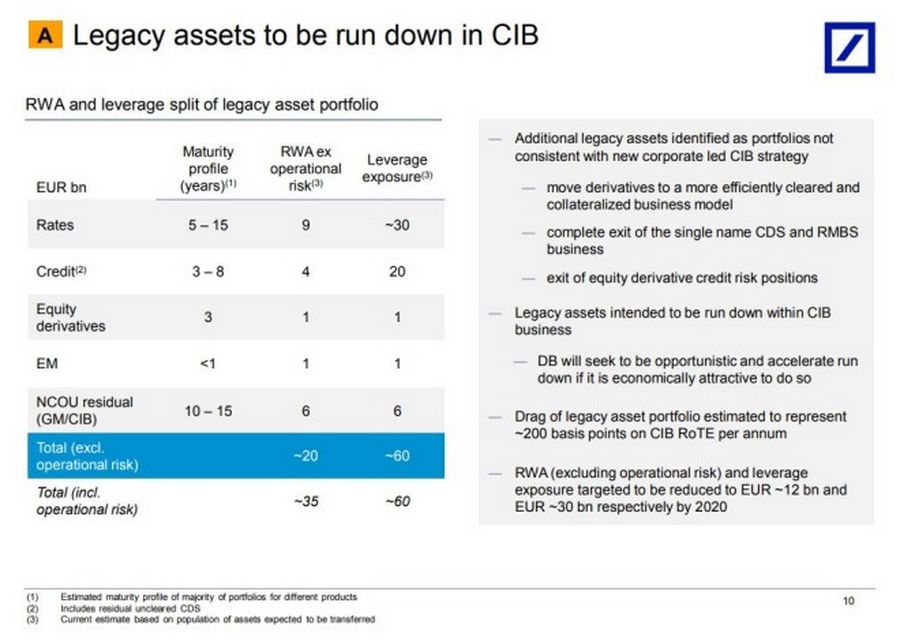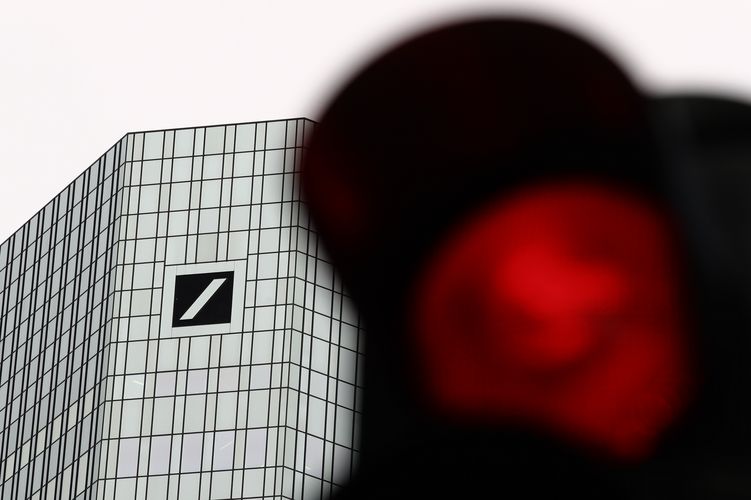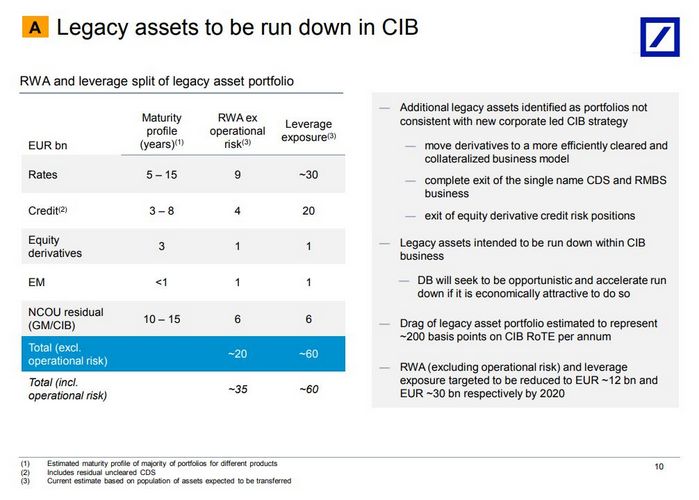Deutsche Bank has managed to offload about half of a €60bn portfolio of legacy trades that had been a major drag on its earnings, in a sign it is becoming more aggressive in its efforts to cleanup old positions, some of which are more than a decade old.
Giving its first update since it revealed the loss-making portfolio of trades alongside an €8bn rights issue 15 months ago, the bank said the leverage exposure of the book had since fallen to around €30bn.
The bank had previously said it planned to hit that target by 2020. While some of the trades have simply rolled off as they matured, the bank has sped up the process by selling assets, unwinding trades and compressing derivatives.
A small team led by Peter Haagensen, a risk manager who joined Deutsche when it bought Bankers Trust in 1999, has led the effort to run down what is internally referred to as the non-strategic - or “non-strat” - book.
“It’s been a lot of work, requiring very close attention to the market so that when opportunities arise we are able to react to them very quickly,” Haagensen told IFR. “We have put good people on the job with a deep knowledge of their respective markets, and we’ve made very good progress.”
About half the portfolio was old rates positions, one-third were credit positions - including some single-name credit default swaps - and the remainder were a mix of equity derivatives, emerging market and non-core exposures.

Source: Deutsche Bank, March 2017
DERIVATIVES BINGO
The bank declined to break down the portfolio as it currently stands. But it said a “significant” part of the reduction had come from a mixture of compressions, moving uncleared CDS on to exchanges, and by optimising hedging.
Compressions happen when counterparties - banks, hedge funds or others - identify offsetting positions in the market. They then terminate the original positions and replace them with another position that is often more capital efficient.
“We had a number of situations where we had offsetting positions at two clearing houses,” said Haagensen. “By finding dealers with matching positions, we were able to effectively move the offsets to the same clearing house, and then net off the position.”
Moving uncleared CDS to exchanges also helped.
“We worked with our counterparties to move nearly €10bn notional of uncleared CDS trades onto cleared exchanges which - once hedged - enabled us to materially reduce the RWA and leverage exposure,” he added.
Deutsche originally said it was exiting the uncleared single-name CDS business back in 2014. That the bank is still unwinding its portfolio four years later highlights the complexity involved in cleaning up the bank.
The rest of the portfolio could also be a challenge. Former chief executive John Cryan said the rates positions were “very long-dated … old-style”. Some aren’t due to run off until after 2030, more than two decades after some were initially booked.
HIDDEN LEGACY
The legacy assets drew criticism when first revealed. Despite several clean-ups, overhauls and capital raises since the crisis, most of the €60bn portfolio was never previously mentioned - despite some trades being over a decade old.
IFR reported in April that the portfolio could be costing the bank up to €500m a year. Some analysts criticised the bank for not giving any updates on the portfolio. The bank declined to comment on the portfolio at the time.
Speaking at an analyst conference in Frankfurt last week, the bank’s chief financial officer James von Moltke said the risk-weighted asset measure of the portfolio - excluding operating risk add-ons - had fallen to €9bn from €20bn initially.
“I do not think of it at toxic … it’s a run-off portfolio that we risk-manage out to its legal maturity dates, or if there are opportunities to crystallise, to compress or do other things with those assets we do so to accelerate the wind down.”
“So it’s a much smaller portfolio than it was originally and it’s running off in line with our expectations,” added von Moltke, who took over as CFO at the end of April. “Some of it’s longer dated but it’s performing as we expect.”
According to Haagensen, speeding up the wind-down of the book has had a “genuinely minimal P&L impact”.
“With asset sales we’ve been careful not to get rushed into exits but to wait for the right opportunity and then move quickly,” he told IFR. “The approach has paid off. We’ve managed to significantly reduce the leverage in the non-strat book in less than 18 months at a genuinely minimal P&L impact.”
STILL SIGNIFICANT
Analysts said some of the legacy trades are also termed level 3 assets, which are illiquid assets a bank holds that are hard to value. Deutsche has said its level 3 assets have come down from €88bn in 2007 to €22bn now.
Still, some analysts said that level is still a concern. Raoul Leonard, financials analyst at investment firm Numen Capital, said that €22bn represented a significant share of the bank’s €47bn of common equity.
“If we went into a European stress situation, these level 3 assets could become very important, as it’s a significant number - for example, if fast tapering of ECB QE alongside Fed balance sheet reduction resulted in a market stress situation,” he said.
But von Moltke dismissed those concerns: “It’s something we have very good visibility into and it’s €22bn out of a €1.5trn balance sheet,” he said.

